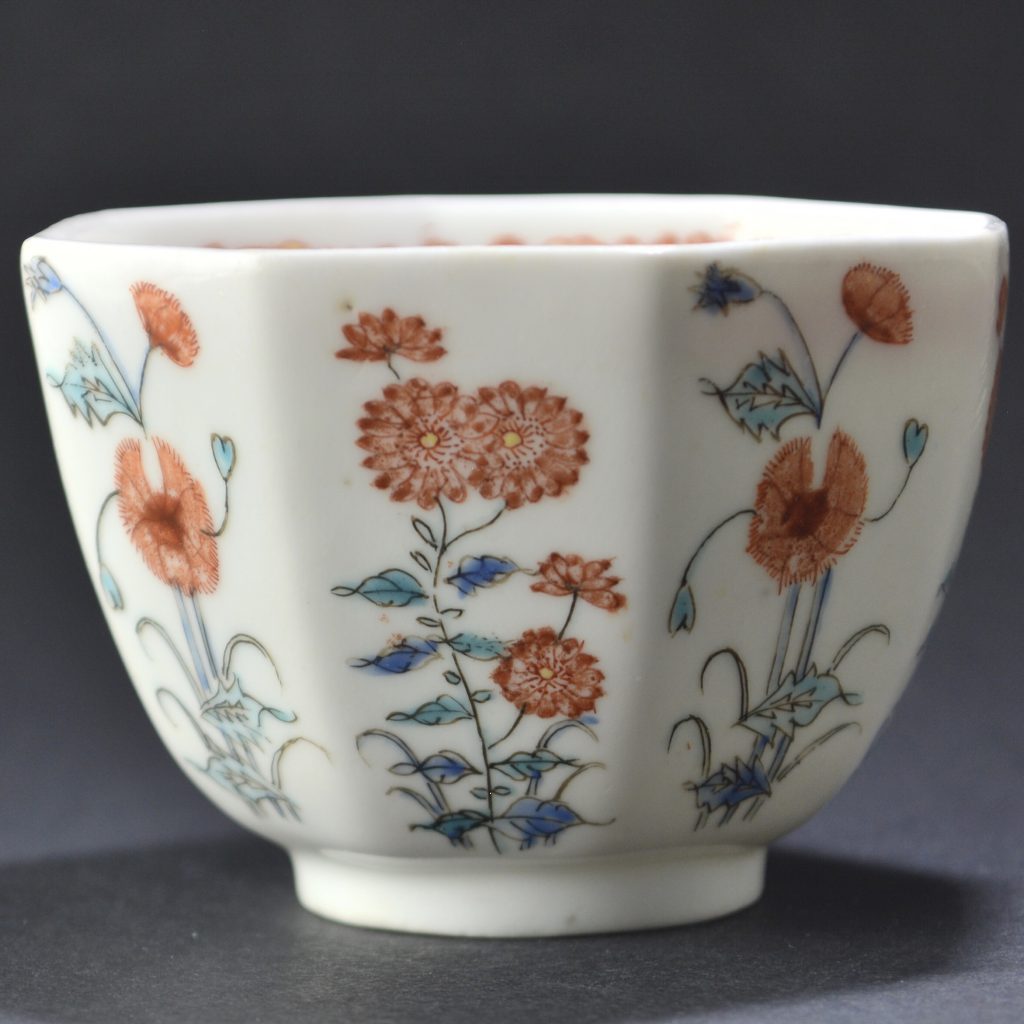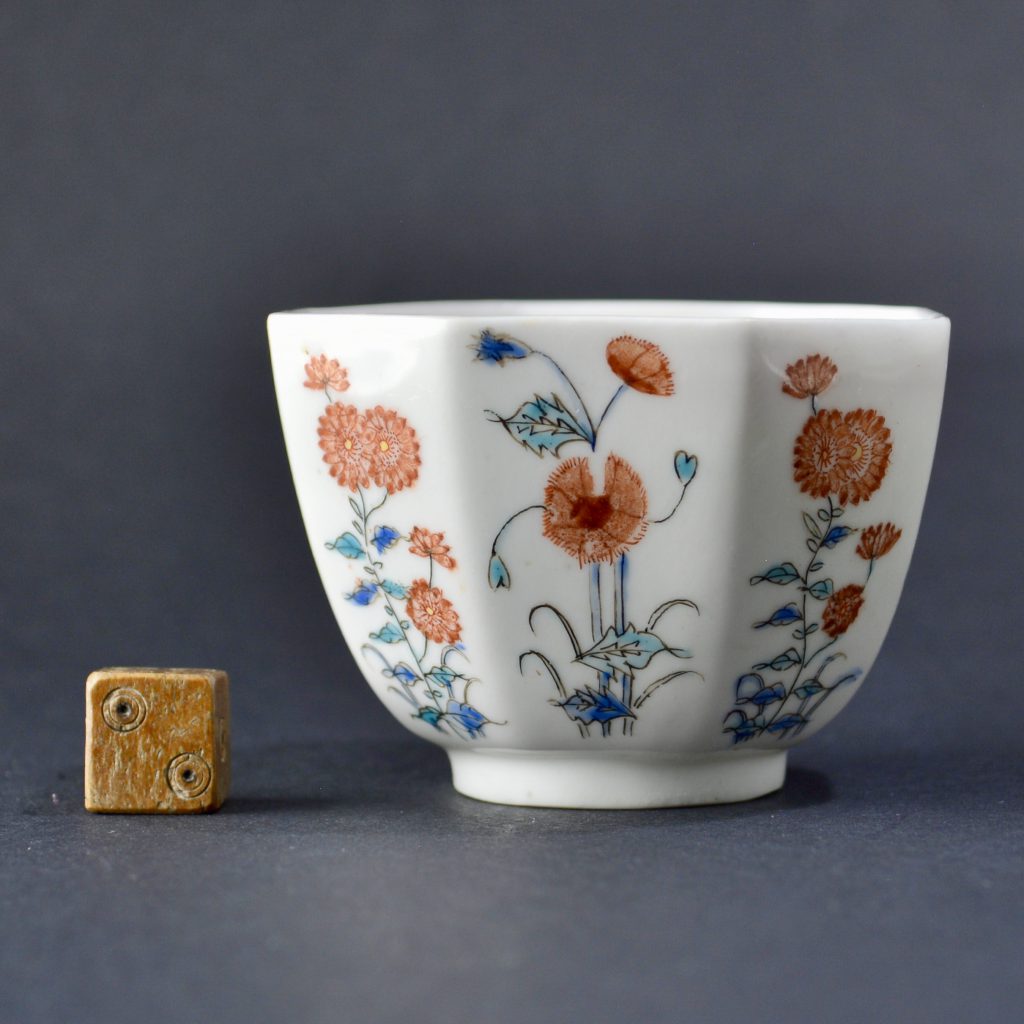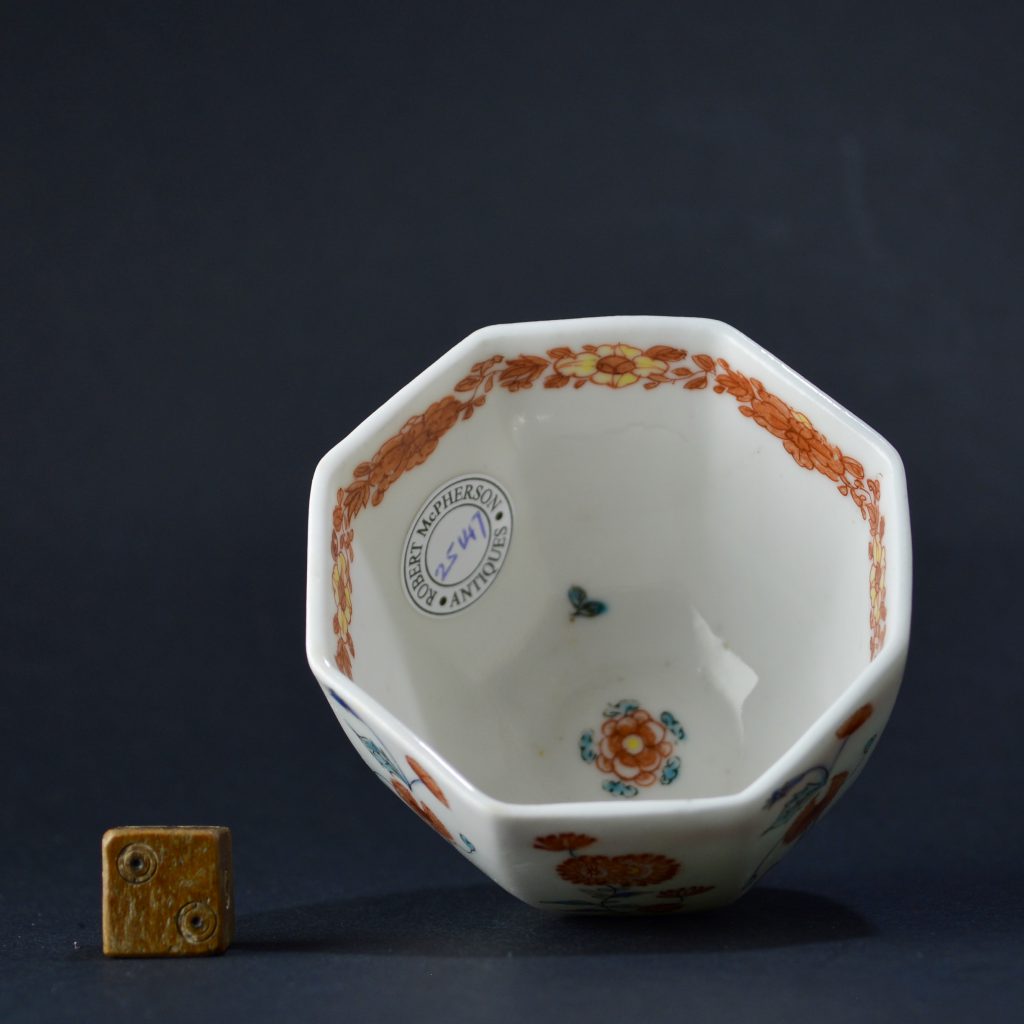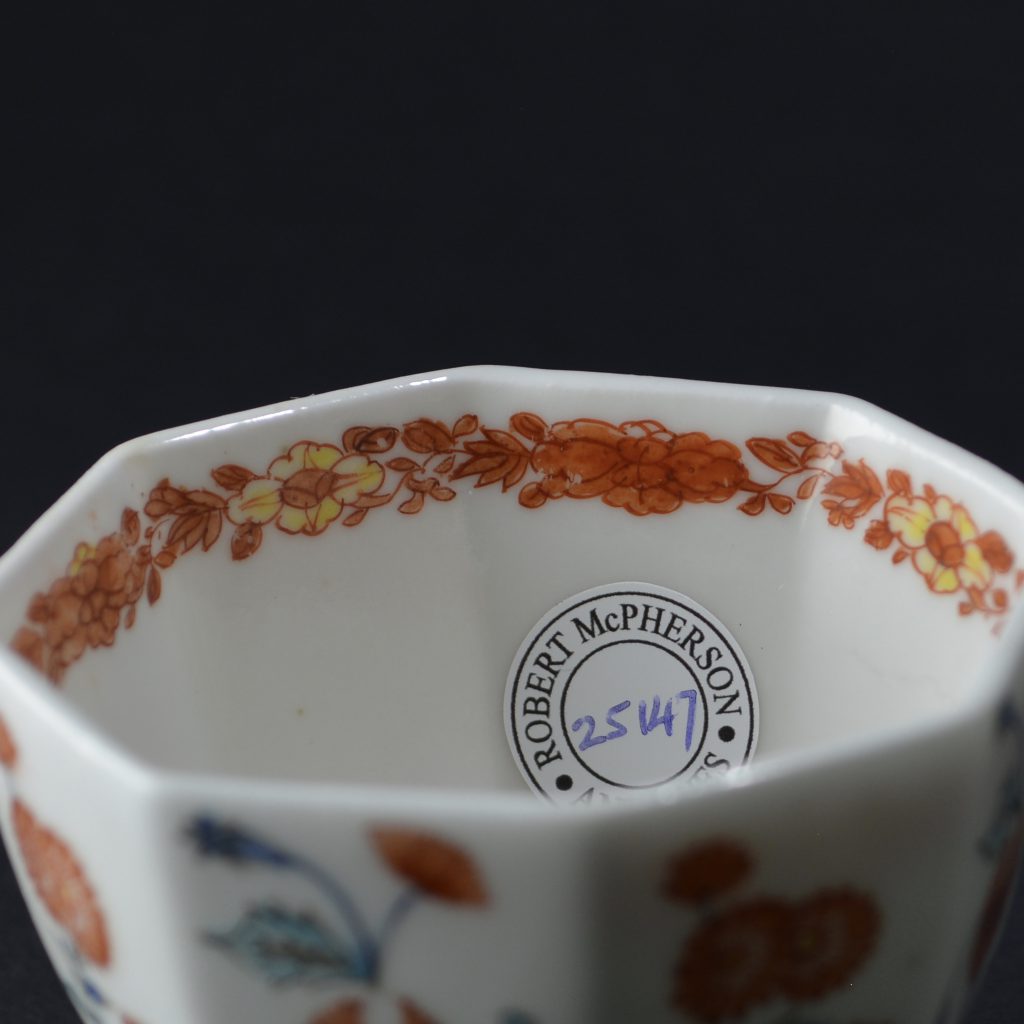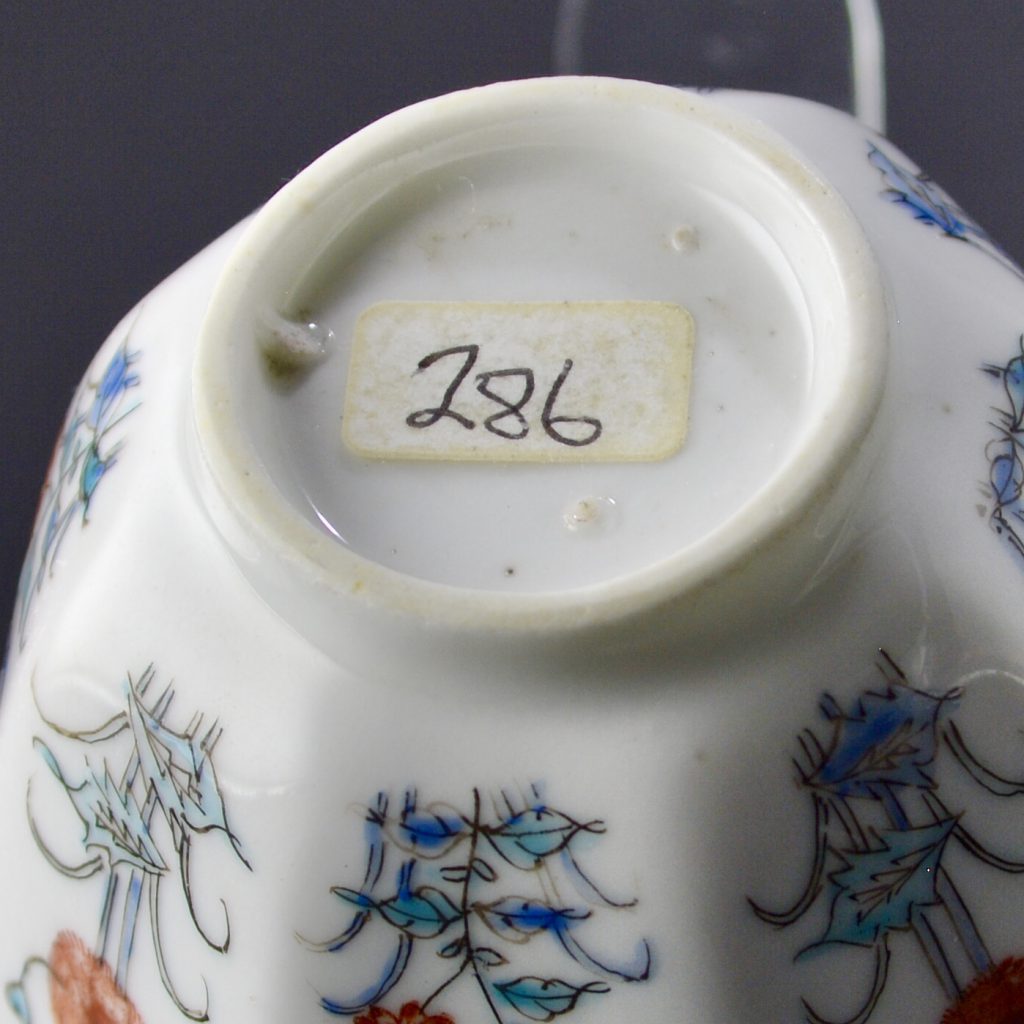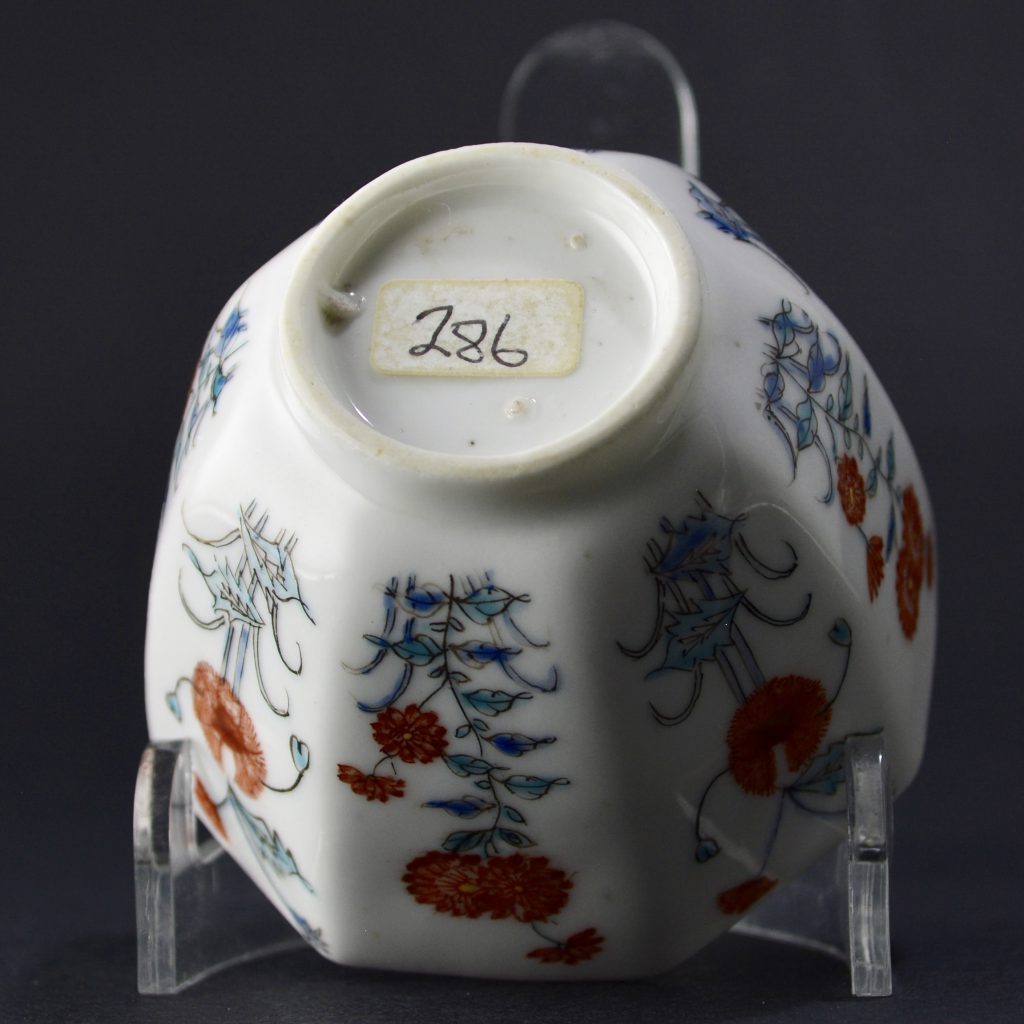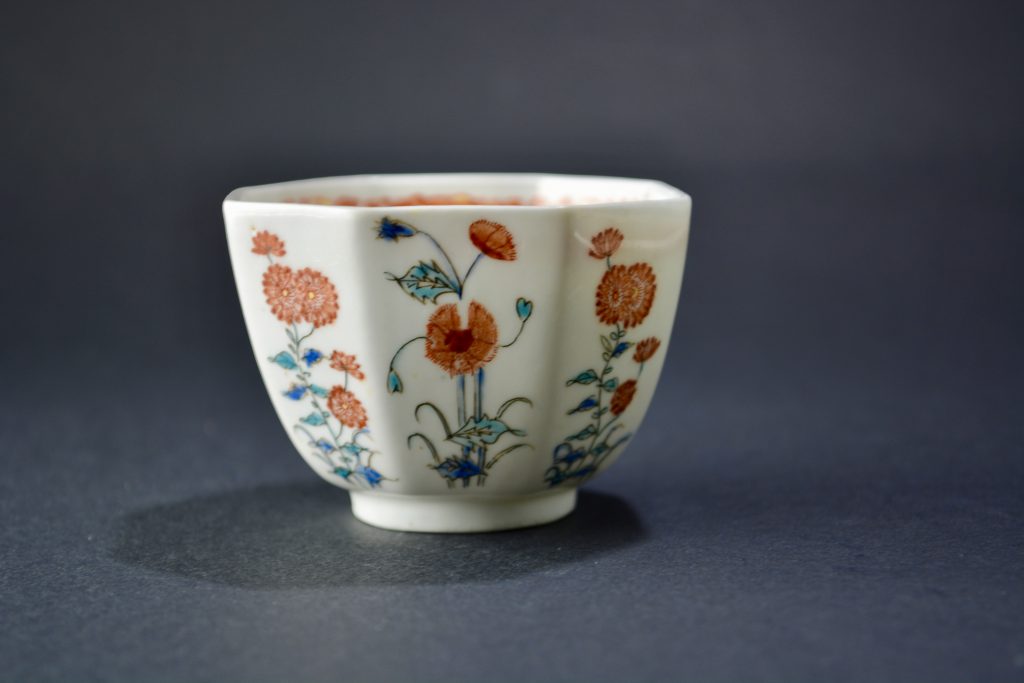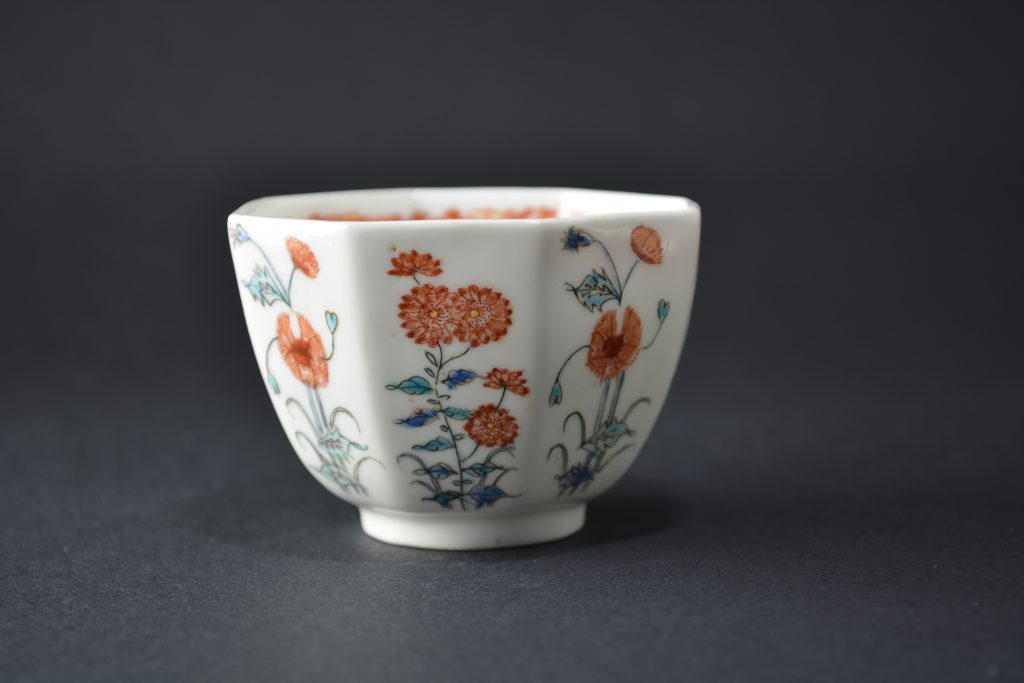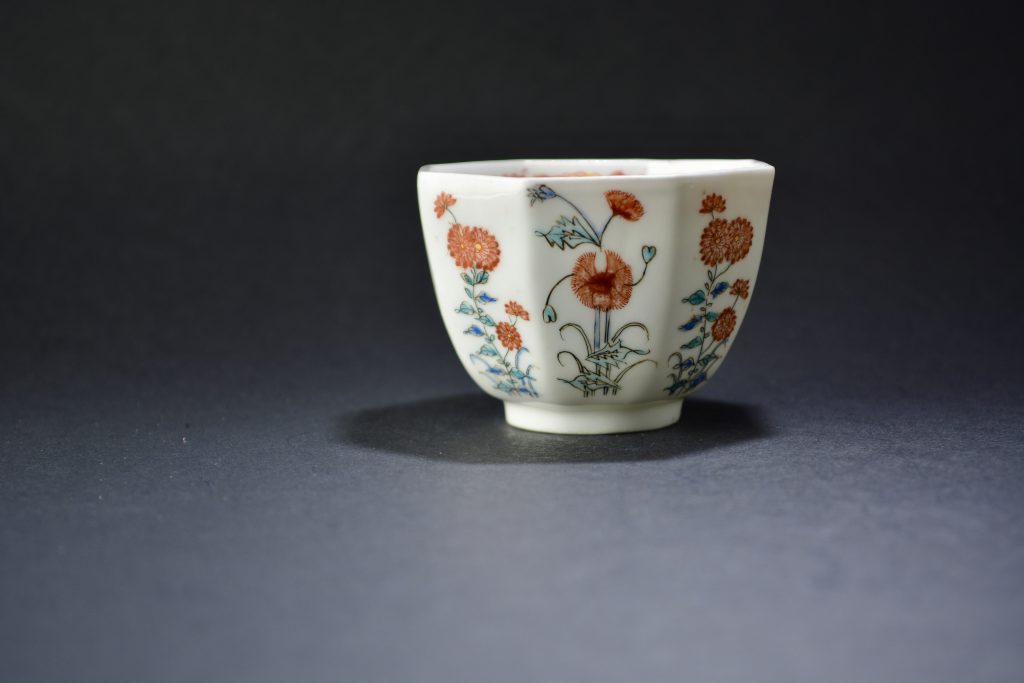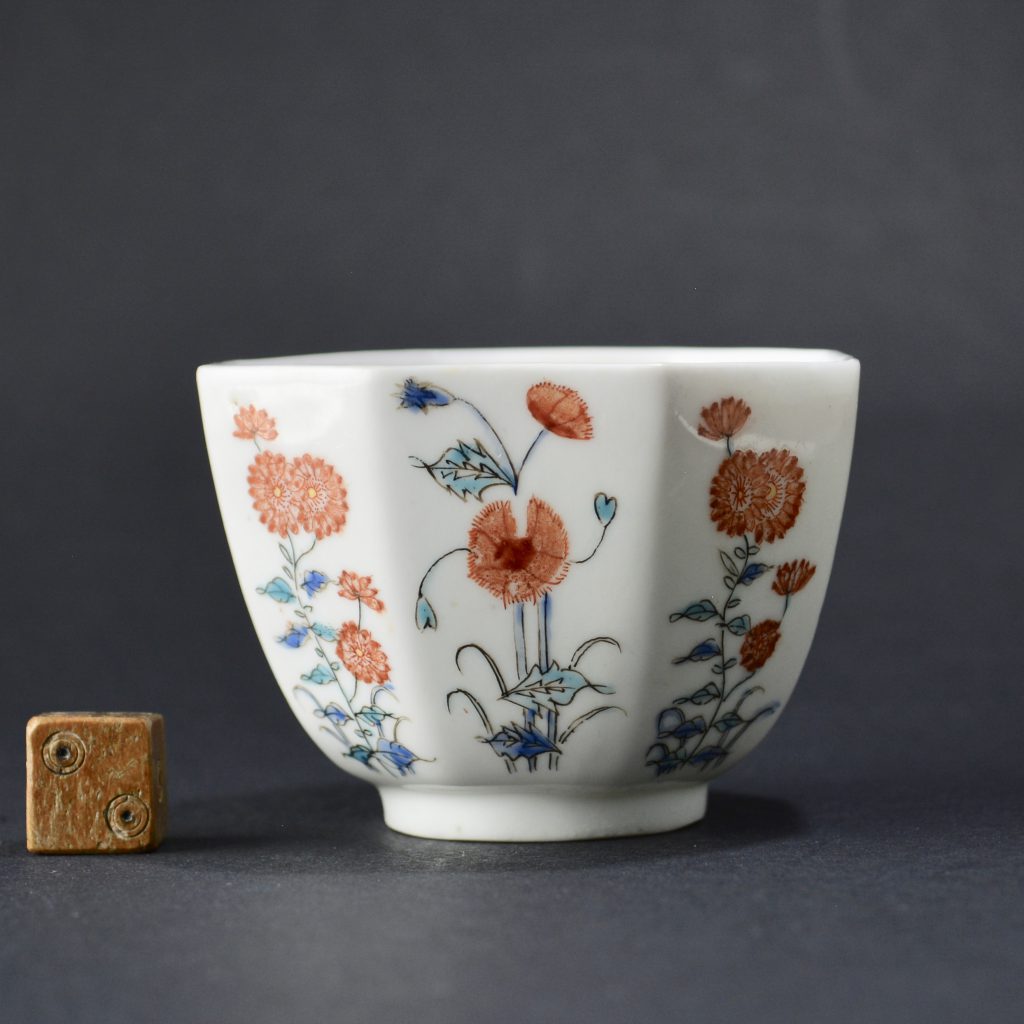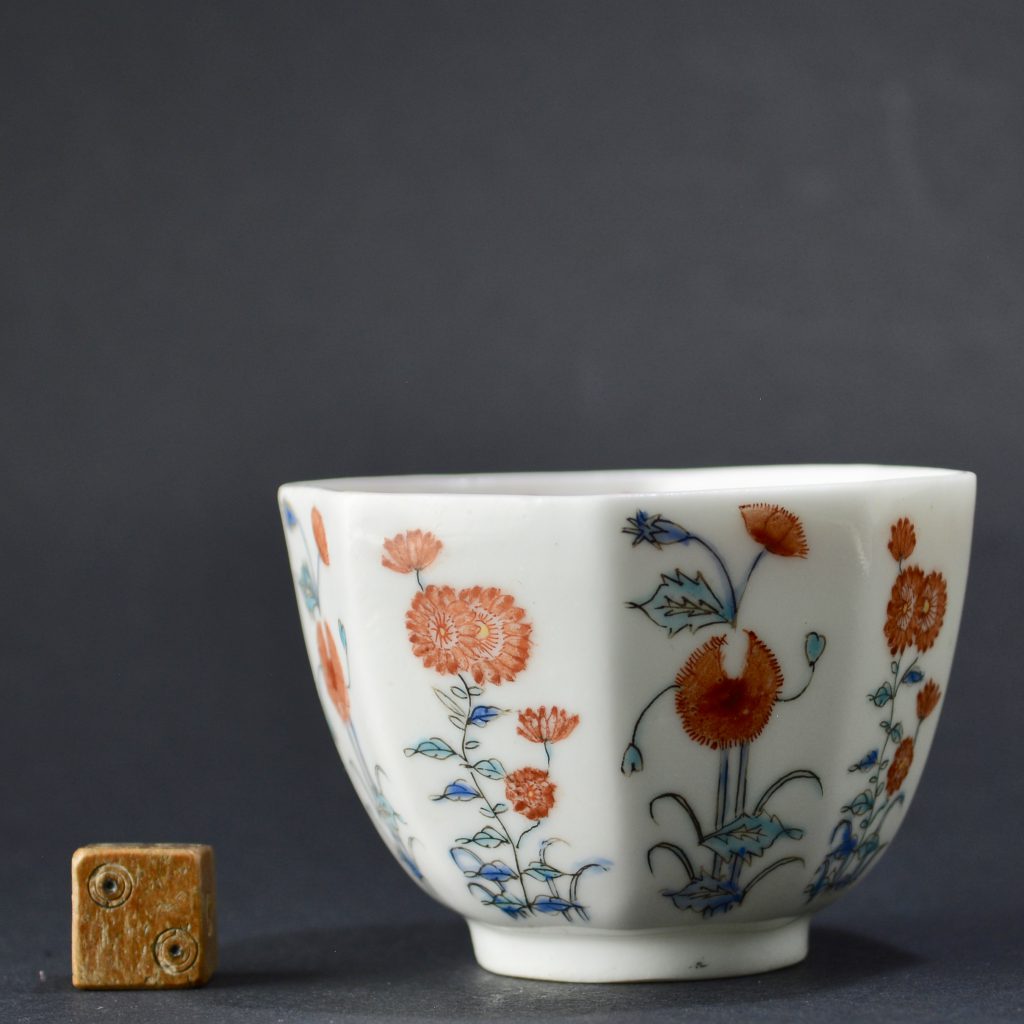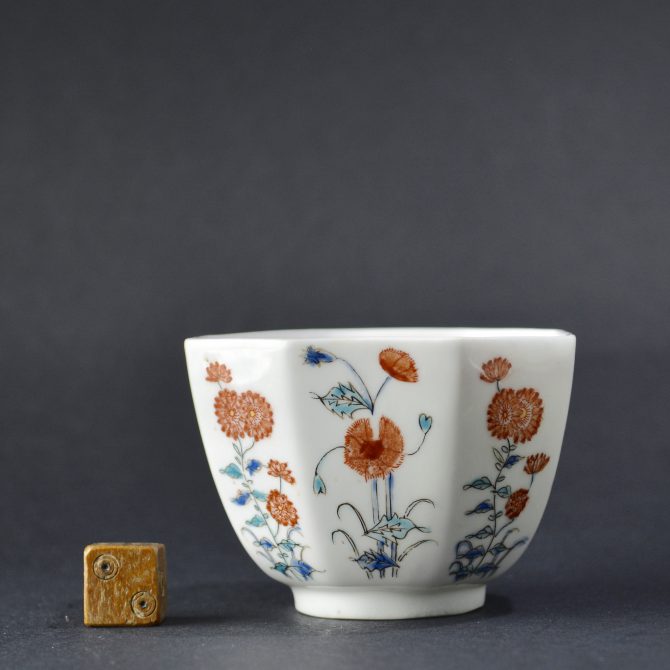
A Chelsea Porcelain Kakiemon Teabowl c.1752 – 1753
An 18th Century Chelsea Porcelain octagonal teabowl in the Kakiemon style c.1752-1753. The small thickly potted teabowl is neatly painted with a close interpritation of the orginal Japanese Kakiemon design. The painting technique and the colours are also quite close to the Japanese orginal. Perhaps by coincidence, the base has three ‘spur marks’ within the confines of the footrim, just as can be found on Japanese Kakiemon porcelain.
SOLD
- Condition
- In perfect condition.
- Size
- Height : 4.3 cm (1 2/3 inches)
- Provenance
- N/A
- Stock number
- 25147
Information
Kakiemon Porcelain :
Kakiemon decoration is usually of high quality, often delicate and with well-balanced asymmetric designs. The designs were normally quite sparse emphasizing the fine white porcelain body known in Japan as Nigoshide (milky white). The opaque white milky Nigoshide body was used on the finest pieces, it appears that it was reserved for fine quality enamelled decoration. Kakiemon porcelain was decorated with a great variety of imaginative designs which include elements such as the `banded hedge`, `flying squirrel`, and the `Quail and Millet` design. The `Three Friends of Winter` were also a very popular group of designs, other subject taken from nature include flowers (especially the chrysanthemum, the national flower of Japan) as well as birds and rock-work. Figural subjects such as the `Hob in the Well` were also popular. This design illustrates a Chinese folk tale where a sage saves his friend who has fallen into a large fish-bowl by throwing stones at it, braking open the pot. Banded-Hedges were a formal device within Japanese traditional gardens, they were often incorporated in designs, includes `The Three Friends of Winter` (Pine, Bamboo and Prunus). These three plants signify perseverance, as neither the pine nor the bamboo shed their leaves in winter and the plumb (Prunus) flowers at the very end of the winter, heralding the arrival of spring.
